Puerto Rican Asopao de Gandules is a hearty, pigeon pea stew that’s delicious, budget-friendly and perfect for feeding a large family. Ready in under an hour.
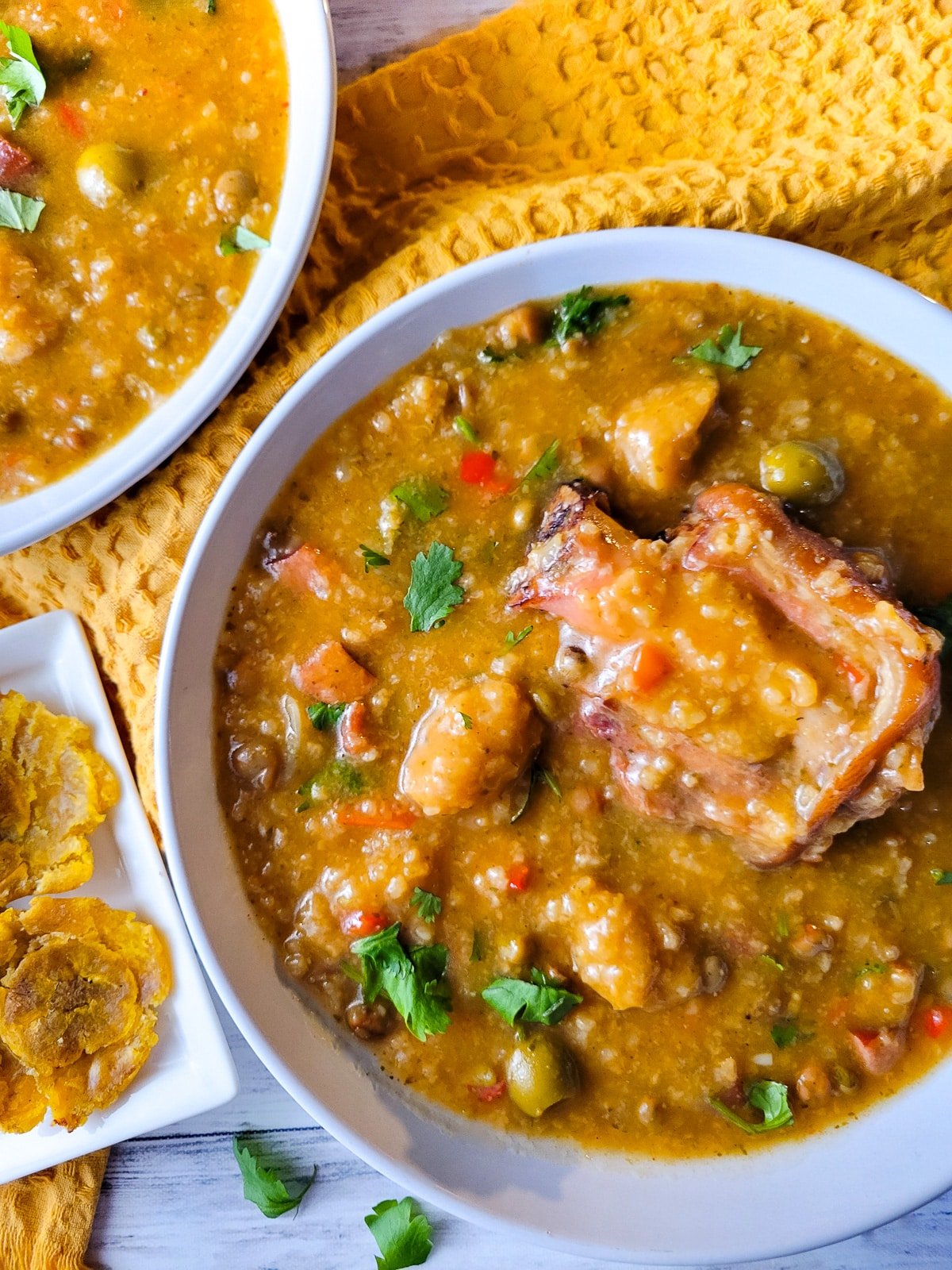
In Puerto Rico, soup isn't just for “cold days,” it's an everyday thing. There's almost always something cooking on the stove, and soups are always are constant. Whether it's a classic sopa de pollo (chicken soup), sopa de salchichón (salami soup), sopa de jamón (ham soup), or sopa de lentejas (lentil soup). And when we're craving something thicker and more filling, we make a sancocho or an asopao.
Asopao is a rich, savory stew made with rice, and you'll find it in several variations, with chicken, beef, pigeon peas, or seafood, like asopao de camarones (shrimp rice stew).
This asopao de gandules (pigeon pea stew) is one of my favorites asopaos, it’s hearty, delicious, easy to make, and perfect for feeding a large family on a budget.
Jump to:
What are Gandules?
Gandules, known as pigeon peas in english, are a big part of Puerto Rican cooking. They're small, round beans with a mild, nutty flavor that tastes amazing in both rice dishes and stews. You'll see them used in our famous arroz con gandules (pigeon peas and rice) and arroz con gandules apastelado.
If you have never made any recipes using pigeon peas, look for them in the Latin foods section of your local supermarket or the frozen Latin section. You can also easily find them online. In Puerto Rico its common to find my family making this dish with fresh gandules, but for ease and accessibility we are going to make this another favorite way, using canned gandules.
Adding Plantain Dumplings
Traditionally, we like to make our asopaos even heartier with bolitas de plátano. These are small plantain dumplings made from green plantains. They add a subtle sweetness and earthy flavor that complements the stew perfectly. They also help make the stew even more filling.
If you've never tried them or made them before, don’t worry they’re super easy to make! Just grate a green plantain, season it lightly with and pepper and then form small balls to drop right into the stew. They'll cook in the stew and absorb all the yummy flavor. So good!
Ingredients
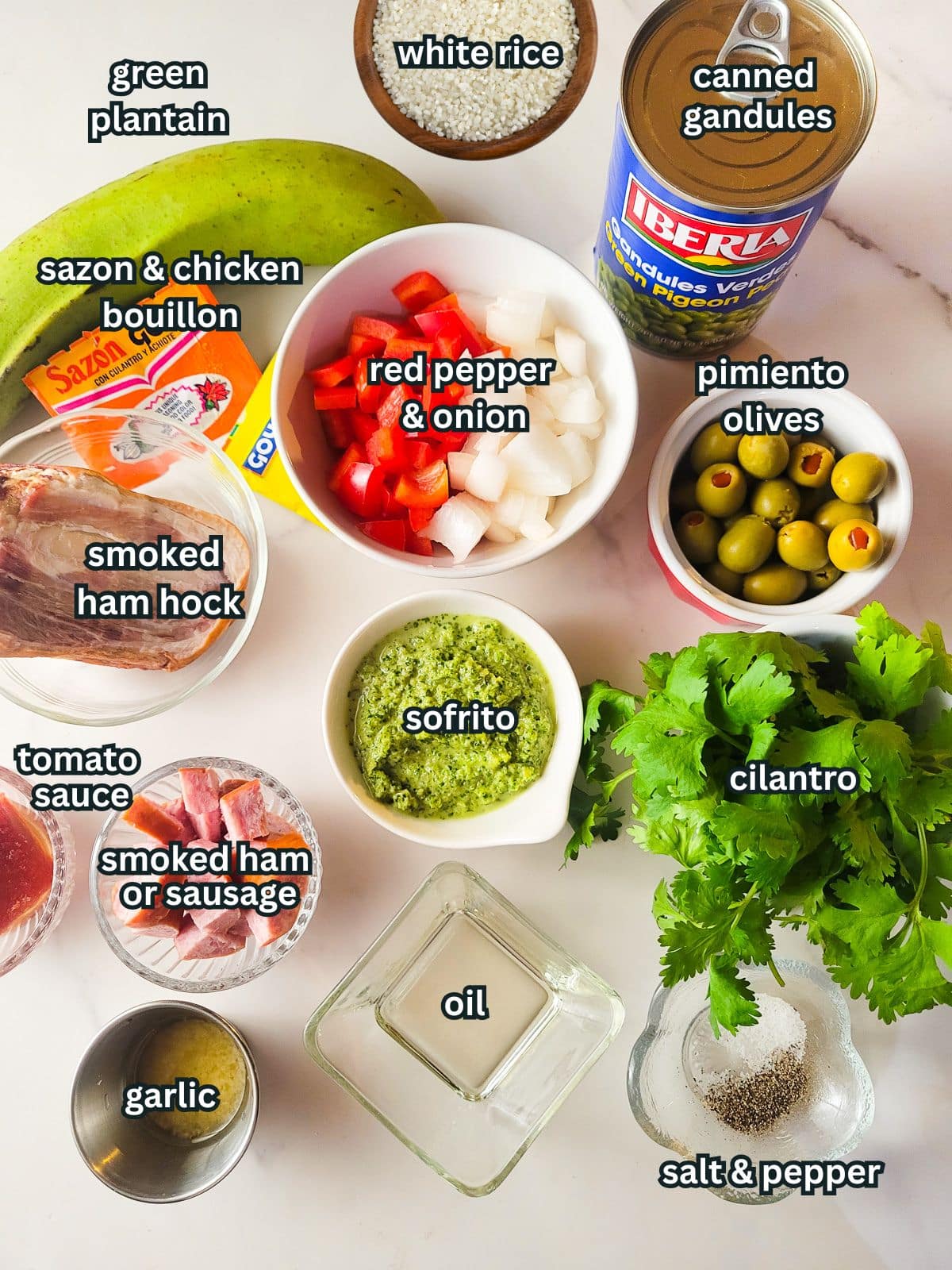
See my recipe card below for a complete list of the ingredients with measurements.
Step by Step Instructions

Step 1: Build the Base.
Heat the oil in a medium pot over medium heat. Add the peppers, onions, sofrito, garlic, ham (or sausage), and ham hock.
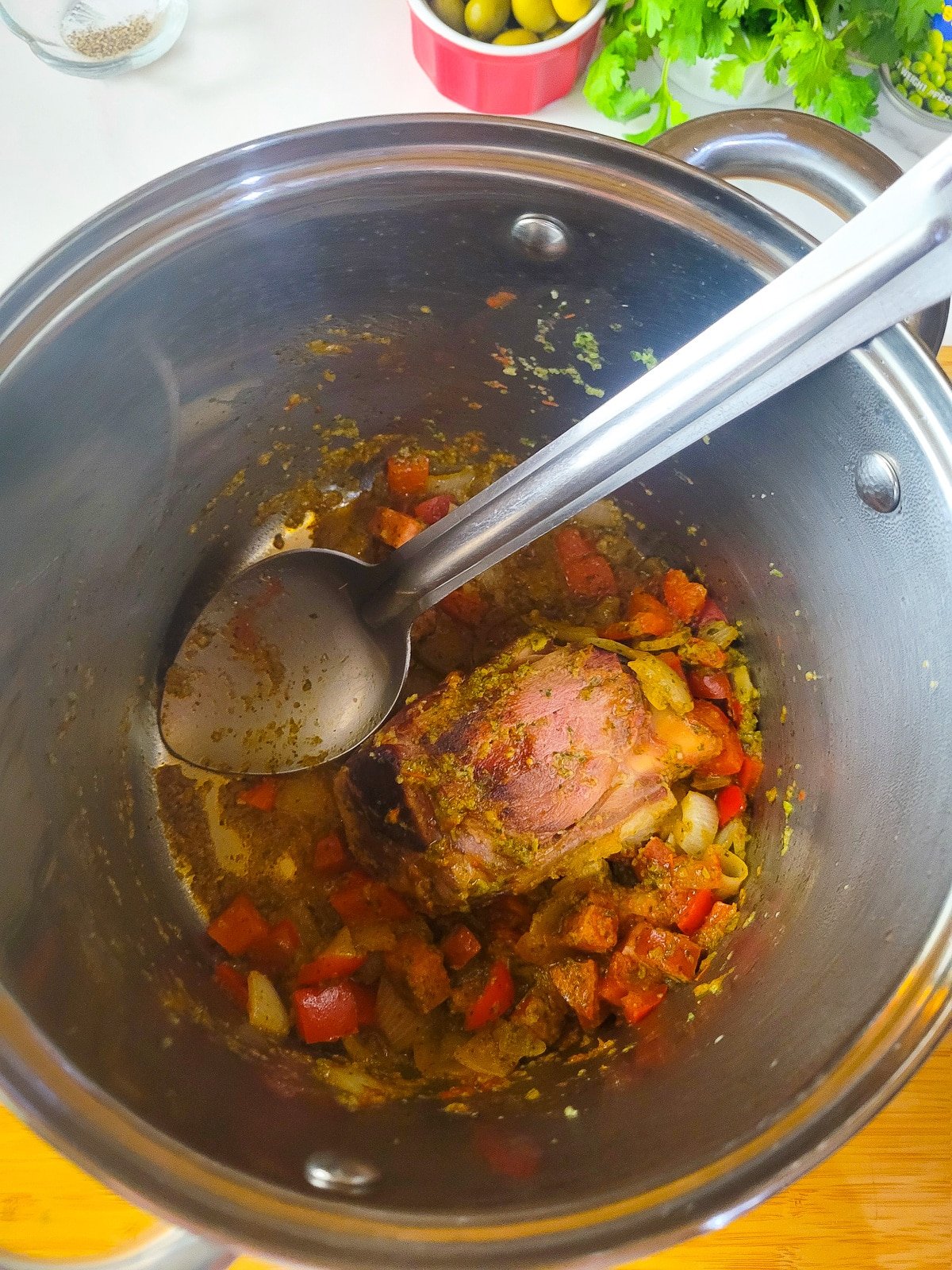
Step 2: Sauté.
Stir everything together and cook until the onions are soft and translucent.

Step 3: Add the Flavor.
Add the gandules, tomato sauce, olives, sazón, chicken bouillon, and water. Stir to combine, lower the heat some and bring to a gentle boil.
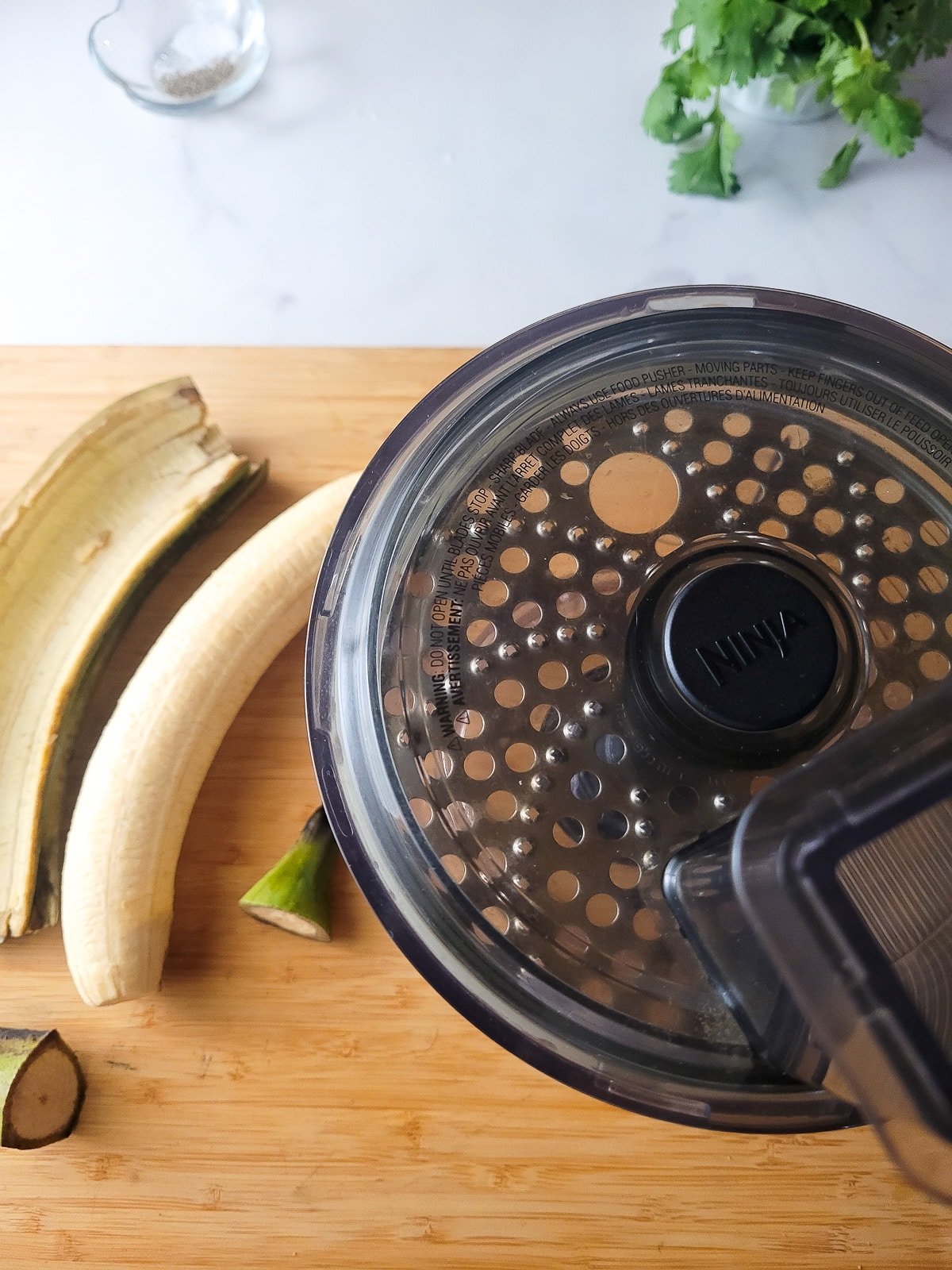
Step 4: Make the Plantain Dumplings.
While the stew cooks, prepare the plantain dumplings. Start by peeling the plantain, cut off the ends and score the skin lengthwise (be careful not to cut into the flesh). Use your thumb or the tip of a knife to lift and peel off the skin.
Note: If the skin is tough to remove, just keep working it gently with your fingers or a paring knife until it comes off.
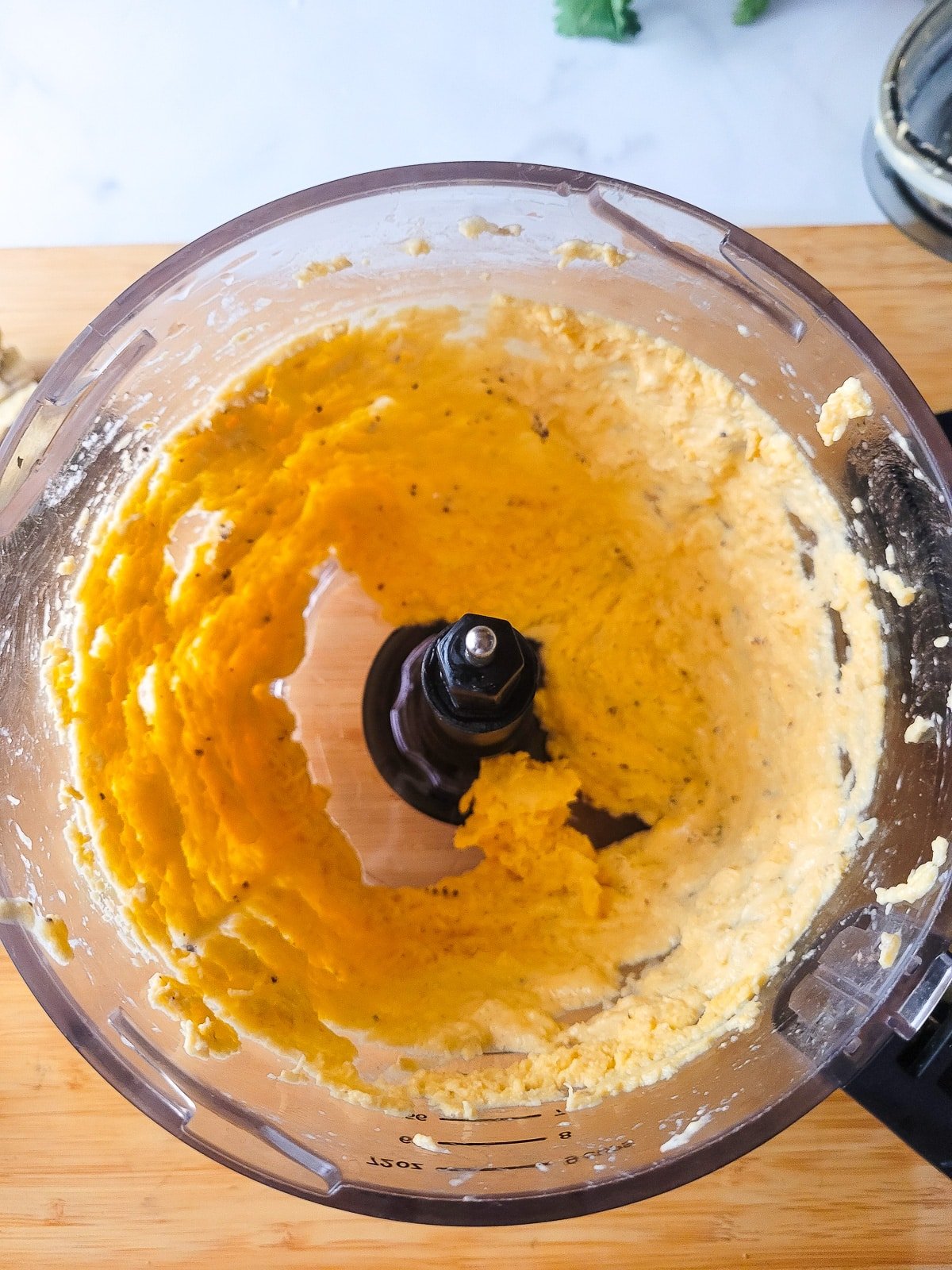
Step 5: Puree or Grate.
Cut the plantain into chunks and blend in a food processor until smooth. Or, use the fine side of a grater to grate it by hand.

Step 6: Season the Mixture.
Season the plantain puree with a little salt and pepper, then use two spoons to form small dumplings.
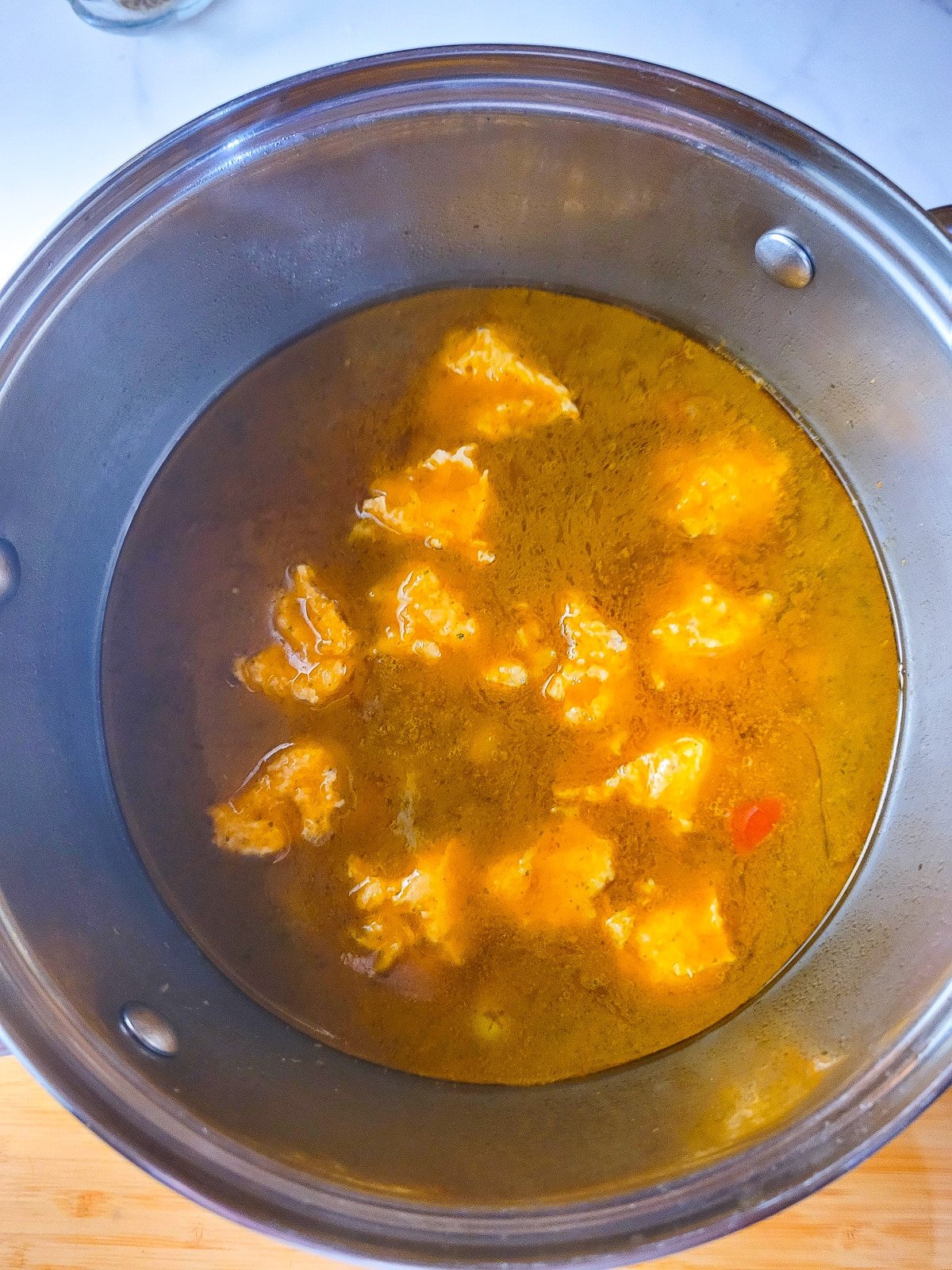
Step 7: Add the Dumplings.
Carefully drop the dumplings into the simmering stew.

Step 8: Add the Rice & Season.
Rinse the rice under cool water until the water runs clear, then add it to the stew. Season the stew with salt and pepper, and cook for 35 – 40 minutes, stirring every few minutes to make sure the rice doesn’t stick to the bottom and burn. Cook until everything is tender and the flavors have come together. When done, top with chopped cilantro. Serve immediately in bowls.
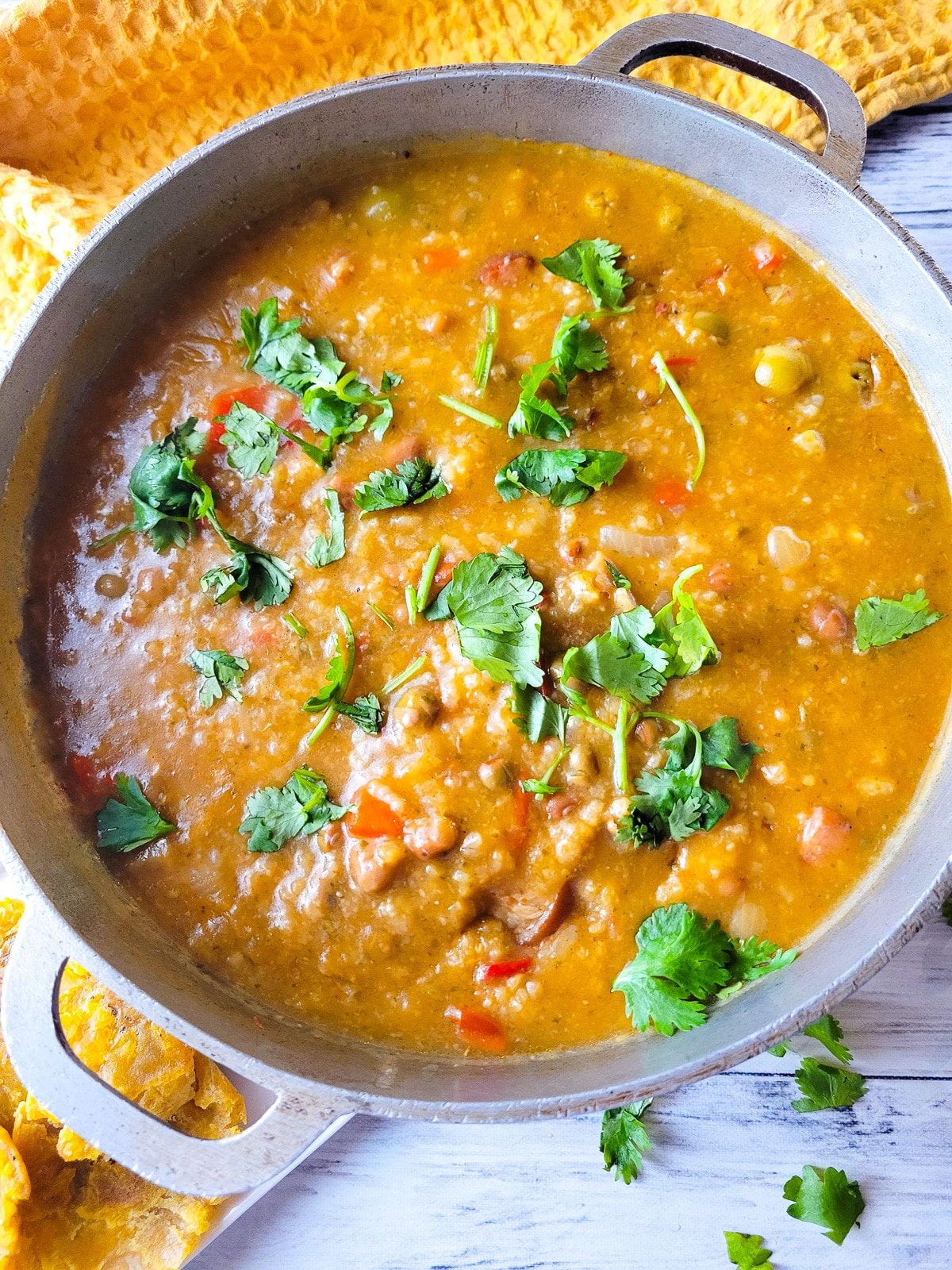
What to Serve Asopao with?
Asopao is perfect on its own, but traditionally we serve it with avocado slices, tostones, or a side of crusty bread.
Cathy’s Expert Tips
- Rice: It might seem like a small amount of rice to add, but the rice will expand and absorb the liquid as it cooks, thickening the stew beautifully. Adding more the ½ cup of rice will soak up too much broth and turn your asopao into more of a porridge than a stew.
- Simmer: Allow the asopao to simmer gently so the rice releases its starch and thickens the stew naturally. Stir occasionally to prevent sticking. This is very important, if you leave the pigeon pea stew unattended the rice will stick to the bottom of the pot and burn.
- Thickness: The asopao will thicken even more as it sits. If it becomes too thick before serving, just add a little more broth or water to loosen it up.
- Bolitas de Plátano: Although the plantain dumplings are optional to add, I promise you won’t regret taking the extra step to make these yummy little morsels.
- Leftover Meats: Asopao is great for using up leftover chicken, turkey, pork or beef. It's a classic Puerto Rican way to stretch a meal for sure!
Recipe FAQs
Stovetop: Reheat the asopao gently over medium low heat. Add a little extra water to help thin it some. Stir every few minutes as it heats through.
Microwave: Add your desired amount of asopao de gandules to a bowl with a splash of water and stir. Heat the stew in minute increments until heated through. If the stew is still to thick for your liking, add a little more water to thin out.
Store leftovers in an airtight container in the refrigerator for up to 4 days. The rice will continue to absorb liquid, so add extra water or broth when reheating.
Yes, you can freeze it for up to 2 months. Just note that the rice may soften more once thawed, but the flavor remains delicious.
Yes, just skip the meat and use vegetable broth instead of chicken broth.
Other Puerto Rican Soups You Will Love
Did you try this recipe? Please leave a ⭐ review below!
Click any of the images in the post to PIN this Recipe and don't forget to follow along on Pinterest and Facebook.
📖 Recipe

Asopao de Gandules
Ingredients
- 1 15 ounce can gandules (pigeon peas) undrained
- 1½ tablespoons vegetable or corn oil
- 1 smoked ham hock
- ½-1 cup ham steak or smoked sausage cut into cubes
- ⅓ cup sofrito
- 1 tablespoon garlic puree
- ½ red pepper rinsed and chopped
- ½ onion chopped
- ¼ cup tomato sauce
- 1 large chicken bouillon
- ½ packet sazon with annatto
- ½ cup pimiento stuffed olives
- ½ cup white rice do not use instant rice
- handful fresh cilantro rinsed and chopped
- salt to taste
- 8 cups water
Bolitas de Platano (Plantain Dumplings – makes about 12 balls)
- 1 green plantain pureed
- salt and pepper to taste
Instructions
- Heat the oil in a medium pot over medium heat. Add the peppers, onions, sofrito, garlic, ham (or sausage), and ham hock. Stir everything together and cook until the onions are soft and translucent.
- Add the gandules, tomato sauce, olives, sazón, chicken bouillon, and water. Stir to combine, lower heat some and bring to a gentle boil.
Bolitas de Platano (Plantain Dumplings)
- Cut off the ends off plantain and score the skin lengthwise (be careful not to cut into the flesh). Use your thumb or the tip of a knife to lift and peel off the skin.Note: If the skin is tough to remove, just keep working it gently with your fingers or a paring knife until it comes off.
- Cut the plantain into chunks and blend in a food processor until smooth. Or, use the fine side of a grater to grate it by hand.
- Season the plantain puree with a little salt and pepper, then use two spoons to form small dumplings.
Add the Dumplings to Stew
- Carefully drop the dumplings into the simmering stew.
Add the Rice and Cook Stew
- Rinse the rice under cool water until the water runs clear, then add it to the stew.
- Season the stew with salt and pepper, and cook for 35 – 40 minutes, stirring every few minutes to make sure the rice doesn't stick to the bottom and burn. Cook until everything is tender and the flavors have come together. When done, top with chopped cilantro. Serve immediately in bowls.









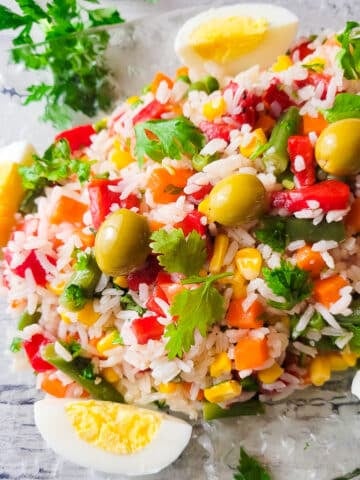

Vern Rodriguez says
As a Puerto Rican born participant in these comments, I must declare that in my opinion, that there is no better stew anywhere in the world than asopao de gandules and bolitas de plátano is a must in my family ‘s traditions. I would also like to point out that sopitas de gandules is a separate but equally fantastic recipe that must be a part of every Puerto Rican household. I almost forgot to mention that many of the mountain dwellers(like me) of the island actually call it sopon dé gandules. I don’t mean to make that statement as a critique, simply offering a side bar comment of value to the discussion. Thank you love the recipes and no offense intended to the many countrymen who have their own variations to these recipes.
Catherine Arena says
Hi Vern:) Thank you so much for your wonderful input!